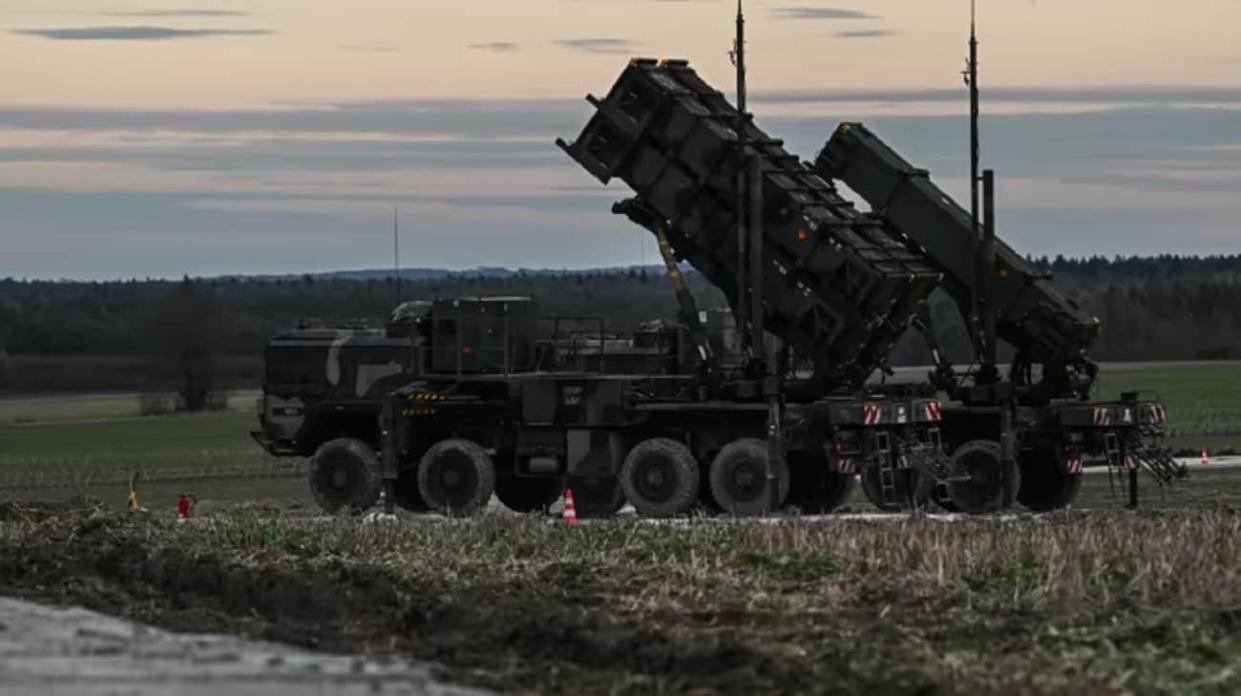ISW compares capabilities of Israeli and Ukrainian air defence to repel attacks

Analysts at the Institute for the Study of War (ISW) have compared the air defence capabilities of Israel and Ukraine to repel attacks, pointing out that Ukrainian air defence is depleted because of delays in US military aid.
Source: ISW
Details: Israel's success in defending itself against large-scale Iranian missile and drone attacks from Iranian territory on 13 April highlighted the vulnerability that Ukraine's geographic location and the continued depletion of its air defence assets pose to Ukrainian efforts in defending itself against regular Russian missile and drone attacks.
Quote: "The Islamic Revolutionary Guards Corps (IRGC) Aerospace Force launched roughly 170 Shahed-136/131 drones, 30 cruise missiles, and 120 ballistic missiles at targets in Israel in a strike package similar to recent Russian strike packages against Ukraine."
Details: The ISW report noted that Russian forces have been experimenting with cruise and ballistic missile strikes, as well as drones of various sizes and combinations, and are now regularly conducting large combined strikes targeting various facilities in Ukraine.
Iran's large combined package of strikes was significantly less successful than Russia's recent attacks on Ukraine, as Israeli air defence assets intercepted almost all of the approximately 320 air targets, with the exception of a few ballistic missiles.
The Iranian drones and missiles had to cross more than 1,000 kilometres of airspace in Iraq, Syria and Jordan before reaching Israel, giving Israel and its allies several hours to detect, track and intercept the missiles and drones as they approached Israel.
Russian forces launch drones and missiles from temporarily occupied territories of Ukraine and in close proximity to Ukraine from Russian territory, giving Ukrainian air defence only a small part of the time that Israel and its allies used to successfully repel a massive Iranian missile and drone attack.
In addition, Israel has a powerful air defence system that is responsible for responding to potential attacks across its shorter borders with neighbours, the Gaza Strip and the West Bank, while Ukraine has increasingly deteriorated air defence capabilities to defend against missile and drone attacks across a much wider front line in Ukraine, as well as across its borders with Belarus and Russia.
Ukraine also does not currently have the capability to conduct air-to-air interceptions with aircraft, as Israel and its allies did on the night of 13-14 April. Ukraine's large size compared to Israel makes it difficult for Ukraine to build the air defence density that Israel has, especially amid continued delays in US security assistance.
The depletion of US-provided air defence assets due to delays in US military assistance to Ukraine, combined with improved Russian strike tactics, has led to an increase in the effectiveness of Russia's strike campaign in Ukraine.
Without substantial and regular security assistance to Ukraine, Russian strikes threaten to limit Ukraine's long-term warfighting capabilities and create operational conditions for Russia to achieve significant battlefield advantages.
"Ukraine requires significant provisions of Western air defense systems and fighter jets capable of intercepting drones and missiles in order to establish a combined air defense umbrella that is even remotely as effective as the one Israel and its allies successfully used on 13 April," the ISW stresses.
Russia's strike campaign against Ukraine demonstrates that even a limited number of successful ballistic or cruise missile strikes can cause significant and likely long-term damage to energy and other infrastructure, underscoring the need for an effective and well-equipped network of air defence capable of maintaining a high level of interception.
To quote the ISW’s Key Takeaways on 14 April:
Israel’s success in defending against large-scale Iranian missile and drone strikes from Iranian territory on 13 April underscores the vulnerabilities that Ukrainian geography and the continued degradation of Ukraine’s air defence umbrella pose for Ukrainian efforts to defend against regular Russian missile and drone strikes.
The Russian Ministry of Foreign Affairs (MFA) is falsely equating the 13 April large-scale Iranian strikes targeting Israel with the 1 April Israeli strike targeting Islamic Revolutionary Guards Corps (IRGC) officials in Damascus, amplifying Iran’s "justification" for the 13 April strikes.
Russian military bloggers largely responded to the 13 April 13 Iranian strikes against Israel by suggesting that the increased threat of military escalation in the Middle East will likely draw Western, specifically US, attention and aid away from Ukraine.
Ukrainian Commander-in-Chief Colonel General Oleksandr Syrskyi reported that the senior Russian military command aims to seize Chasiv Yar, Donetsk Oblast by Russia’s Victory Day holiday on 9 May.
The Russian military’s ongoing restructuring of the Western Military District (WMD) into the Moscow and Leningrad military districts (MMD and LMD) is reportedly shifting areas of operational responsibility (AOR) for Russian force groupings in Ukraine.
The Russian Ministry of Defence (MoD) has reportedly fired the commanders of a combined arms army and motorised rifle regiment operating in Ukraine’s south likely for failing to recapture areas lost during the Ukrainian summer-fall 2023 counteroffensive.
Ukrainian forces advanced south of Kreminna and southwest of Donetsk City and Russian forces recently made confirmed advances near Chasiv Yar (west of Bakhmut) and Avdiivka.
Support UP or become our patron!

